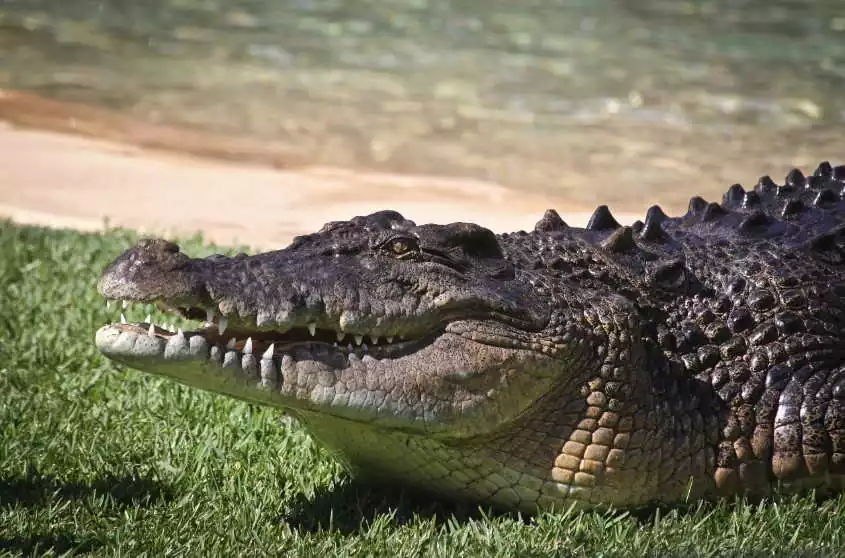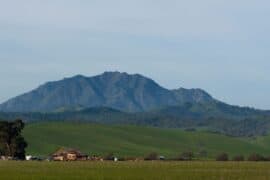Understanding Australian Crocodiles: A Parent’s Guide to Safety and Education
Hello, adventurous parents and curious kiddos! ? Are you ready to embark on a journey through the riveting world of Australian crocodiles? These majestic creatures have been the subject of awe and mystery for ages, and it’s time to unlock the secrets of their habitat, behavior, and how to safely appreciate them in their natural environment. So, grab your explorer’s hat, and let’s dive into the fantastic realm of crocs!
What Makes Australian Crocodiles Unique?
Australia is home to some of the most fascinating wildlife on the planet, and crocodiles are no exception. There are two types of crocodiles that call Australia home: the Saltwater Crocodile (Crocodylus porosus) and the Freshwater Crocodile (Crocodylus johnstoni). The Saltwater Crocodile, also known as “Salty,” is the largest living reptile in the world, while its smaller cousin, the Freshwater Crocodile, is known for being less aggressive to humans.
Spotting the Differences: Saltwater vs. Freshwater Crocodiles
- Size Matters: Saltwater crocodiles can grow up to 7 meters long, while Freshwater crocodiles usually cap out around 3 meters.
- Habitat Habits: As their names suggest, Saltwater crocs can live in both salt and freshwater bodies, whereas Freshwater crocs prefer rivers, creeks, and lakes.
- Temperament: Saltwater crocodiles are more territorial and can be seen as more dangerous to humans. Freshwater crocodiles are typically shy and less likely to cause harm.
Where to Find Crocodiles in Australia
If you’re keen to catch a glimpse of these ancient reptiles, it’s important to know where to look. Saltwater crocodiles are prevalent in the northern regions of Australia, stretching from Western Australia to Queensland. They bask along riverbanks, coastal marshes, and sometimes wander into beaches. Freshwater crocodiles reside mainly in the Northern Territory and northern parts of Western Australia, sticking close to inland waterways.
Crocodile Safety: Tips for Families
When visiting crocodile habitats, safety comes first, especially with children in tow. Here are some essential tips to keep your family safe while observing crocodiles:
- Observe from a Distance: Always keep a safe and respectful distance from crocodiles. They are fast and can be unpredictable.
- Heed Warnings and Signs: National parks and crocodile-inhabited areas will have signs warning of their presence. Always take these seriously.
- Avoid Water’s Edge: Crocodiles can lurk near the edges of water. Encourage kids to play and explore away from the waterline.
- No Feeding: Feeding crocodiles can make them associate humans with food, which is dangerous for everyone.
Note: Always research and follow the guidelines provided by local wildlife authorities and conservation experts when you are planning to visit crocodile habitats.
Fun Crocodile Facts to Share with Your Kids
Kids love fun facts, and crocodiles are full of them! Here are a few to get their imaginations roaring:
- Did you know that the teeth you see on a crocodile are not for chewing? Crocs swallow stones that help grind up their food in their stomachs!
- Crocodiles have a powerful bite, regarded as one of the strongest in the animal kingdom. Yet, their jaw muscles for opening are so weak that even a human could hold a crocodile’s mouth shut!
- These reptiles date back to the time of the dinosaurs, having survived for more than 200 million years. Talk about ancient!
Learning about Australian crocodiles is not only thrilling, but it’s also a fantastic way to teach kids about nature, respect for wildlife, and the importance of conservation. Stay tuned as we continue this journey, exploring the intricacies of crocodiles’ lives, their role in the ecosystem, and more tips on how to responsibly appreciate these magnificent creatures. Adventure awaits, so let’s keep learning and stay safe!

5 Things Parents Should Know When Preparing for Australian Crocodile Encounters
1. Understand the Risks and Prepare Accordingly
Planning an outdoor adventure in crocodile territory? It’s important to understand the potential risks and have a plan in place. Ensure you and your family are aware of the behaviors that may attract crocodiles, such as fishing near the water’s edge or cleaning fish where crocs might be present.
2. Educate Your Family on Crocodile Conservation
Crocodiles play a pivotal role in maintaining the balance of their ecosystems. By teaching our children about the significance of these creatures and the need to protect their habitats, we foster a new generation of conservationists who appreciate the natural world.
3. Identify and Respect Crocodile Warning Signs
While exploring, you’ll likely come across warning signs that indicate the presence of crocodiles. Teach your kids the importance of these signs and make a game out of spotting and respecting them. It’s a fun and engaging way to keep them safe.
4. Keep Campsites Away from Water
Camping in the great Australian outdoors is an unforgettable experience, but safety is key. Always set up camp well away from the water, as crocodiles can venture onto land, especially at night. Choosing the right campsite can be both educational and a crucial safety measure.
5. Have a Response Plan in Case of Crocodile Sighting
Discuss with your family what to do if you encounter a crocodile. This includes not running or turning your back on the crocodile, but instead backing away slowly and seeking safety. Preparing your family with knowledge and a plan will ensure that everyone reacts appropriately and remains calm.
Exploring the Ecosystem: Crocodiles as Key Species
Crocodiles are a keystone species, meaning their existence is crucial for the environment they inhabit. They help control fish populations and shape the wetland landscape. Understanding the environmental impact of crocodiles can be an exciting topic for family discussions on biodiversity.
Crocodile Encounter Etiquette: A Family Guide
For many families, seeing a crocodile in the wild is a highlight of their Australian adventure. But it’s vital to practice proper wildlife etiquette. This includes keeping quiet to not disturb the crocs, not littering in their habitat, and never attempting to attract a crocodile’s attention.
Isn’t the world of Australian crocodiles just remarkable? As a parent, you are equipped with the knowledge and tools to ensure your family’s adventure is as safe as it is thrilling. Remember, while crocodiles may seem like creatures from another era, they are very much part of our world, and respecting their space is key to our harmonious coexistence.
Let’s keep exploring, discovering, and learning about the wonders that Australian crocodiles have to offer—safely and respectfully. The adventure never stops, and neither does our quest for knowledge. After all, the more we know, the better prepared we are to navigate the wondrous environments that these incredible creatures call home.
For more great fun click here. For more information see here
Disclaimer
The articles available via our website provide general information only and we strongly urge readers to exercise caution and conduct their own thorough research and fact-checking. The information presented should not be taken as absolute truth, and, to the maximum extent permitted by law, we will not be held liable for any inaccuracies or errors in the content. It is essential for individuals to independently verify and validate the information before making any decisions or taking any actions based on the articles.




